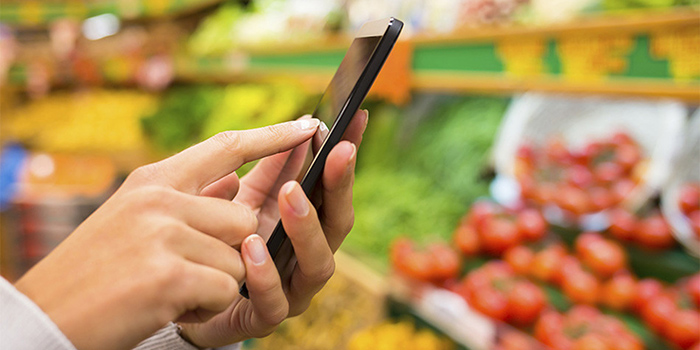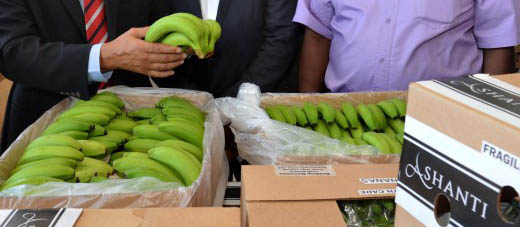For quite a while online retail focused on the sale of electronics due to rising demand. Lately, focus has shifted to fashion and soon online food and groceries are expected to take centre stage in online retail. Pretty much everything sells on the internet and today online grocery is gaining momentum in this industry.
In 2016, the Indian online grocery market placed fifth in the Asia Pacific region. Online grocery in the country has grown by 44% since 2014 to 2016. Flipkart’s CEO Kalyan Krishnamurthy confirmed that the platform will certainly be diving into online grocery. And, Amazon got the go-ahead from the Department of Industrial Policy and Promotion (DIPP) to commence online retail.
Since there is a demand for online food and groceries, you have the liberty to engage in this section of online retail.
How do you get started?
A – Figure out what to sell
Like all retail businesses, you first must have a product that sells. At the same time you should have something unique which still has demand. This could be anything, like marinades or masala mixes, ethnic snacks and drinks. At the same time, check out the list of foods that are prohibited from being sold in your target locality. Also, check out what food items customers would like to buy online. This can be done by staying updated with the latest news on online grocery. Or conducting surveys on social media.
B – Manufacture or procure?
The next step is to figure out where you will be obtaining your product from. Will you be preparing it yourself or obtaining it from suppliers?
Here you need to consider a bit of costing. Manufacturing will involve the cost of –
- Raw materials
- Preparation
- Packaging
Procuring eliminates the requirement to do the above, as they are already done by the supplier. However, you still need to compare costs of preparing and procuring the food products you want to sell.
In addition to costs, you must consider production quality, taste, time frames and so on, to ensure customers are satisfied with the product and timely delivery. On the other hand, if the product you are selling is your own creation like a special blend of spices or a family recipe for energy bars, you need to consider the grade off supplies to use control costs accordingly.
C – Packaging and storage
Packaging and storage are vital when dealing with food items. This is because the manner in which you pack and store your produce will affect the quality of your product. Depending on the kind of products you plan on shipping you need to arrange for appropriate storage facilities like coolers, fridges, temperature regulators and so on. Packaging should also be of a certain quality to avoid spoilage and prevent vermin from getting into it. Order your competitors products to understand how they package their goods.
You can also make your packaging extra special for consumers by adding instructions on them. These can include storage instructions, usage instructions or recipes. In addition to this, you can include nutritional facts, interesting health facts and more. This may help you increase customer interest in your products.
D – Where to start selling
- Online store – This way you get a say in what makes it onto your online platform and what does not. That means you can sell ready to eat food items like cakes, pastries, methai and more. You can control the where you want to sell. You can interact with customers directly and inform them about your processes and even explain delayed service should it be required.
The only problem will be that you need to manage everything including production/ procurement, packaging, delivery, stock maintenance, site maintenance and so on. These are time-consuming tasks and require a whole lot of dedication and funding to make sure your online store succeeds.
- Marketplaces – Online marketplaces are looking for grocery and food suppliers these days to sell online. Amazon is developing various facilities for local producers to help them cut out middlemen who distribute their products. In addition to this, selling on online marketplaces limits your expenses for channel development and customer attraction. The hassle of delivery is also taken care of and in case of etailers like Amazon, you can access specialised storage facilities.
On the downside, poor performance can get you kicked off of some marketplaces. You cannot control delivery and competition is plenty on marketplace setups.
E –Shipping services and durations
Food items are perishable in nature so they need to reach customers quickly. Same-day, next-day or two-day guarantee delivery is necessary to maintain the freshness of your products and avoid spoilage. Fast delivery will also help you gain customer preference.
However, the faster a delivery is the more it may cost. At the same time you have very limited time to prepare the order.
To reduce costs of delivery get the right kind of delivery service. For example, a company which offers adequate refrigeration in its delivery trucks for dairy goods. You could also switch between same-day and 2-day delivery depending on the season. During the summers deliver quickly to avoid spoilage. During the winters you can slow down the pace of delivery.
F – Product pricing
Price is just as important as packaging and shipping your products. The key to pricing your products is to consider –
Cost of the product
+ Labour
+ Overheads
+ Packaging
+ Shipping
+ Reshipping cost (Just in case)
+ Profit
When it comes to profits avoid throwing down big numbers that may scare away customers. Keep competition in mind as well. Look at other retailer prices for an idea of how much you should charge.
G – Get word out about your product
Even if you offer the freshest of products or the tastiest food items, no will know if you don’t spread word about your goods. Connect with your friends on social media and inform them about your online food business. Keep posting about your new product additions, recipes people can try with you produce, or the discounts they can enjoy on your products.
When you start off in the online food and grocery business, make sure you start off small. Begin with 5 products change them according to their demand then experiment with a new addition every month. And, stay aware of the obstacles when dealing with food items online. These can be anything like –
- Temperature sensitivity
- Additional packaging requirements
- Shelf life
For more helpful tips on online retail, contact us at Browntape. We are India’s leading ecommerce solution providers and we are always happy to help!




